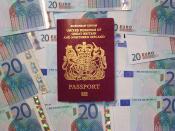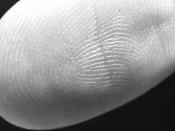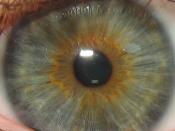TABLE OF CONTENTS
BIOMETRICS 2
1. INTRODUCTION 2
1.1. Biometrics Background 2
1.2. History of Biometrics 2
1.3. Areas of Research 2
2. RESEARCH INFORMATION 4
2.1. Biometric Methods Used 4
2.2. Areas of Implementation 5
2.3. Future Advances 6
2.4. Negative Aspects 7
2.5. Positive Aspects 7
3. CONCLUSION 8
4. REFERENCES 9
5. BIBLIOGRAPHY 10
Websites 10
Books 10
Other sources 11
6. APPENDIX 1 12
BIOMETRICS
1. INTRODUCTION
1.1. Biometrics Background
Biometrics comes from the Latin words Bios - life and Metron - to measure; it is the oldest form of identification. Biometrics cannot be guessed or stolen because it is you! Your iris scan allows you to access your office. Your voice could unlock the door of your house. Are you the key? Is reality that simple? [1]
We all have unique attributes for example DNA and fingerprints, we can also identify someone by their voice and signature therefore with the advances in information technology this form of identification and verification is being introduced more widely.
For example schools, businesses, law enforcement and airport security.
1.2. History of Biometrics
Biometrics can be traced back to Egyptian times when it was used to identify workers. The pay the workers received normally consisted of wheat and barley and it was discovered that some workers tried to claim their allocated allowance more than once a month by maintaining another identity. This lead to extra details being taken about each individual worker for identification to verify whom they said they were. The details taken included features such as a straight nose, long face and scars, these details could be supplemented with measurements of their physical attribute. [2]
Another known practice of biometrics was used in China during the fourteenth century, it was reported by Portuguese historian Joao de barros that...


